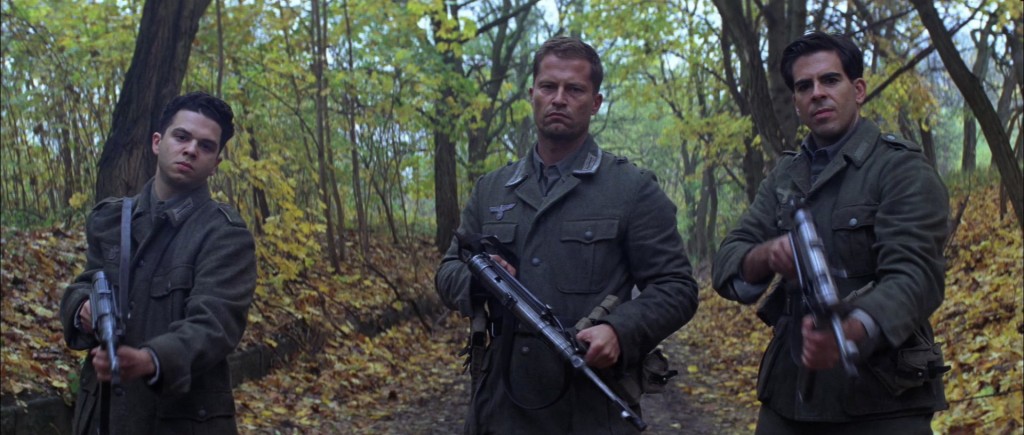“The best swords stay in scabbards”– a part of the teaching imparted to Samurais.
Violence on screen is an ever present and ever inconclusive topic of discussion. The intensity may vary, but it always kicks off debate at the slightest provocation. While watching Quentin Tarantino’s latest film Inglorious Basterds at a pre-release screening made me reflect on this. The fact that this film is scheduled for release on October 2 brings a wry smile to my face.
Violence is a reality in daily life and so will it be quite legitimately present in film, it has often been stated. This point need not even be argued. But, what can be discussed is the ways in which violence is depicted. Almost all major filmmakers who have had a prolific career have had to deal with violence in their films one way or other. Any categorization or classification of the same would be problematic. But, we can certainly discern the attitude of the film maker by analyzing the way he/she is recreating it on screen.
Broadly speaking, I would say that there are principally two attitudes and I would like to call them as open and closed. In the open world, violence is depicted as a part of the wider world in which the story is situated. There is often a psycho-social, metaphysical understanding of the phenomenon. Moreover, there are values embedded in it, such as bravery, cruelty, futility, resistance, protest and likewise. In Kurosawa’s Yojimbo, when Mifune walks in as an outsider, he arrives as a footloose soldier, a wandering spirit. After becoming aware of the oppressive and decadent situation in town, he decides to stay there and precipitate violent situations between the warring factions. Thus, he becomes a moral force dedicated to cleansing the society. In the end, having drained out the bad blood he walks away to be on his lonely path of the outsider. Although he is the protagonist he is always above the trap of violence and he uses it a strategy against oppressors.
“Violence of the oppressor is wrong, violence of the oppressed is right,” is what Antonioni said at one point, clearly bearing out the fact that it is the filmmaker’s attitude that matters.
Bogmalov, the author of the novella Ivan, was not happy with Tarkovsky’s screen version of it – Ivan’s Childhood. To Bogmalov, Ivan was a socialist hero fighting the evil Nazis in the Great Patriotic War[ World War II]. To Tarkovsky, however, Ivan was a child brutalized by war. War was not a great pageant for him, but a soulless destroyer of life and civilization. And that is the way, it was recreated on screen.
The Godfather trilogy is full of violence. But Coppola has said that the film was a loose metaphor – Michael as America.
In sharp contrast to this open viewpoint is the world of filmmakers like Tarantino.
The world of Reservoir Dogs, Kill Bill 1 and 2 abounds in mindless violence. His characters do not exist so much in the real world but rather in a void that is filled with amoral, cynical behaviour. The characters cannot speak without using swear-words. Warped characters, foul language, casual killings is presented in an exhibition of techniques that is like an over-dressed salad. To me, particularly striking is the scene in Kill Bill 1, when the school girl returning home from school watches her mother fighting out the battle of life and death with another woman in the kitchen. After all the gadgets and crockery in the kitchen is destroyed, the scene ends with the girl’s mother being stabbed neatly in the middle of her chest. The girl watches all this dispassionately with no reaction at all. Later on, there are scenes in the film, where it borrows the visual setting of Hong Kong actions films to give it an exotic look and a more spectacular scale.
The whole thing is so synthetic that it is as if, we are not watching human beings on screen, but a video game between robots that are programmed solely for violence
And reflecting on this, may bring us to the interesting question of the depiction of violence in Hindi films. That, of course, merits another series of articles altogether…


